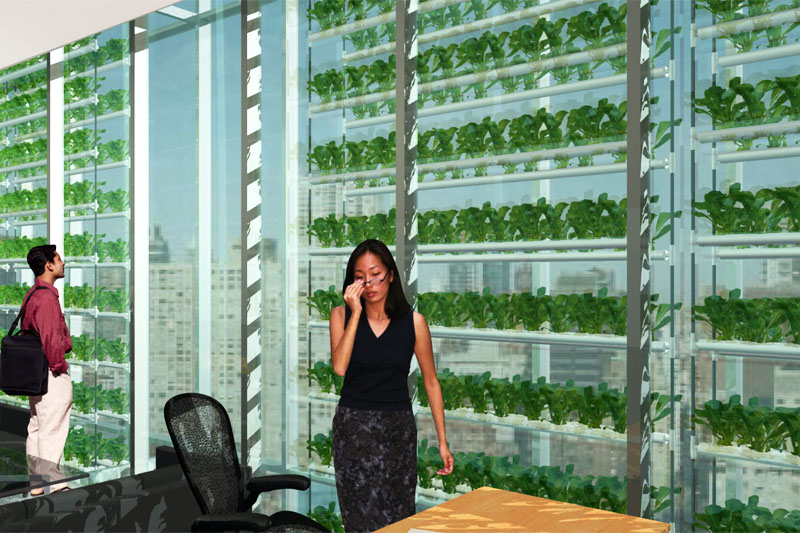Zak Adams of BrightFarm Systems and Clare Milfin of Kiss + Cathcart Architects, and Viraj Puri of Gotham Greens all presented their take on the theme of Building Integrated Architecture.
Essentially, Building Integrated Agriculture is the attempt to synthesize agricultural systems into the functions of a building. The two most talked about means for doing this were high yield hydroponic rooftop greenhouses that captured rising waste heat, and Vertically Integrated Greenhouses, which consist of vertical conveyors of plants between the two layers of a double paned window building skin.
Kiss+Cathcart Vertically Integrated Greenhouses in double skin facade of 2020 Tower
Rooftop greenhouse in Blue Sea Developments Affordable Housing Complex in South Bronx by BrightFarm Systems.
These groups make a strong case that the technologies for growing food in buildings exists, and of course we are all aware of the inefficiencies of our food production and distribution systems. However, its important to note that these systems are mostly designed to grow expensive perishable produce, and not the high caloric grains that use up most square footage of farmland.
The most radical shift may not be whether we grow plants hydroponically on roofs or in walls, but how that happens financially. Current farming practices are thoroughly embedded in the current financial system. Throughout history, revolutionaries have struggled to change these models without adding on the extra challenge of literally deterritorializing agriculture.
Perhaps the market will make Building Integrated Agriculture relevant, but with BIA functioning best with new construction, it seems unlikely that given the current financial climate enough investment will be made to provide sufficient amounts of food for a large city. Viraj Puri of Gotham Greens is betting otherwise, as they plan to open the first commercial rooftop greenhouse in NYC. He didn't however, discuss the figures of how much heating an uninsulated greenhouse in an NYC winter would cost versus putting vegetables grown in a similar high-density system in a place like Florida on an overnight electric freight train.
Zak Adams mentions that perhaps a "higher end market that appreciates appropriate labeling" could emerge. I admire their optimism, but who said eco-luxury had anything to do with sustainability? Not to say these efforts are not worthwhile, but they should be treated as the building details they are, and not some sort of paradigm shift, at least not yet.
Zak Adams, BrightFarm Systems
Clare Milfin of Kiss + Cathcart Architects



